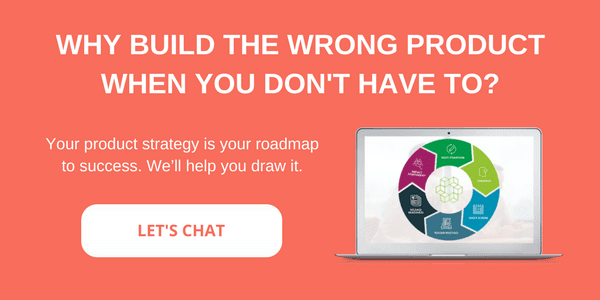The Software as a Service model, or SaaS, has been dramatically changing day-to-day operations for businesses for years now. In some cases, it has transformed entire industries that previously relied on clunky, outdated legacy software.
SaaS has become a lucrative business model, because rather than using the old software model of buying the software and using it until the next update, SaaS offers companies software on a subscription basis. By subscribing to SaaS:
- Companies can get the software they need with smaller, incremental payments instead of a large initial payment, which can be cost prohibitive for smaller companies
- Those companies generally get updates and maintenance included, which is more cost efficient usually and gives them one less thing to worry about
- The developers get a steady cash flow from customers’ subscription payments rather than large chunks of money once a year.
The SaaS business model is attractive. However, only businesses that can deliver real solutions to business problems in a way that is easy to learn and easy to integrate with other programs and processes will truly succeed in the SaaS market.
There’s a lot more to developing enterprise software than there is to developing consumer-facing software. Beyond the price point, you have:
- Multiple types of users and logins to consider
- Demand for constant availability (online and offline)
- The expectation of upgrades and new features
- The kind of security that’s needed when managing that much data
Beyond these standard user expectations, what are the 6 secrets to developing a successful SaaS platform?
1. Validate your most important feature
Enterprise clients expect a robust array of features and updates for their money. But just like any other software development, you need validation that the service is something businesses will use and pay for before you sink money into development. Identify what the core function of your SaaS is and the specific problem you are solving. Then validate whether your solution is something a business would pay for. If your most important feature cannot be validated, then you need to go back to the drawing board before you waste a lot of time and money developing the wrong service.
2. Don’t try to reinvent the wheel
It’s not uncommon for developers and designers to borrow ideas from other apps, websites and software. Good SaaS is good for a reason. Figuring out how to make your SaaS solution something users will love does not mean reinventing the wheel to develop something 100% unique. Do some research on other SaaS frameworks that have been successful or that you love using. What aspects of the software do users love? What features or UI/UX aspects make it so successful? Identifying why other solutions have been successful is the first step to developing your own solution that users will love. Then, simply try to improve on that service.
3. Perform user interviews
Spend your time in alpha and beta wisely by performing user interviews. Interviewing users is important, because it gives you their unique perspectives. You can speculate all day long on how users will interact with your software. However, the reality is you’ve been building the product from the ground up and have seen it through every step. That means you already have a base knowledge of the product and can’t possibly see it with fresh eyes.
Surveys are great, but actually talking to users can give you way more insight into how real people will use your service. Interviews allow you to talk through issues or frustrations, ask questions about their experiences, and gain insight into features they wish they had.
When it comes to choosing users to interview, choose wisely. Create use cases and user profiles, and interview users who fit those “ideal user” characteristics. BONUS TIP: Also choose users who have influence. Spending time with influencers and turning them into raving fans will benefit you in the long run.
4. Build a strong onboarding experience
You can test UI/UX aspects of your software all day long, but chances are a percentage of your users are going to be overwhelmed and/or confused the minute they start using your software. Software is complicated – especially enterprise software that has multiple functions, features, and customization options. Take a cue from other successful SaaS companies and take the time to onboard new clients properly. Your client is spending good money for your service, so offer them a thorough onboarding experience. Train them how to implement and use your software properly.
Not taking the time to onboard could mean that users give up, cancel their service, and tell others in the industry that your software is too complicated. The risk is too high to skip the onboarding process.
5. Look for ways to constantly educate your users
It doesn’t end with onboarding. You want to keep educating your users to ensure they succeed using your software. There’s a reason why Salesforce developed Trailhead, its own free learning platform. Or why HubSpot offers a number of certificate programs for its users. It’s not just about selling software. It’s about providing a service in which customers can be a success story because they used your solution.
Education can be delivered in a variety of ways: a full on platform like Trailhead, a program like Hootsuite University, a robust help section, or an automated email system that keeps users engaged by suggesting specific features, tips and tricks. Be creative and engaging, and create a plan for user education.
6. Develop, test, and automate lead generation
Getting new customers is the lifeblood of your business. Every successful SaaS company has a strong lead generation system. It’s an ongoing process that involves lots of testing to learn what converts and what doesn’t. Spend the time and money to develop and test lead generation strategies. Then work smarter by automating the processes you’ve developed. Ironically, there are lots of great SaaS systems out there that help with lead generation.
Developing a SaaS solution is no easy task, but these six secrets will keep you on the right track.
If you’re currently developing a SaaS platform or are still in idea phase, give us a shout at RTS Labs! We love tackling new SaaS projects!







